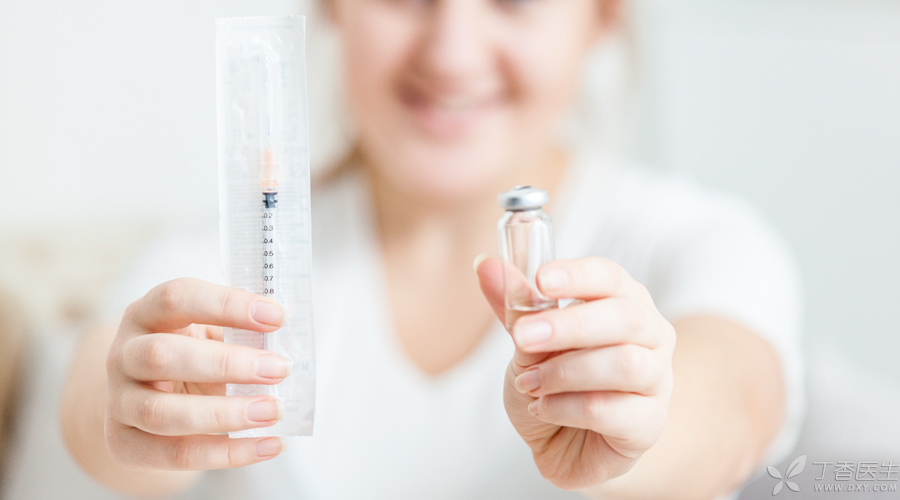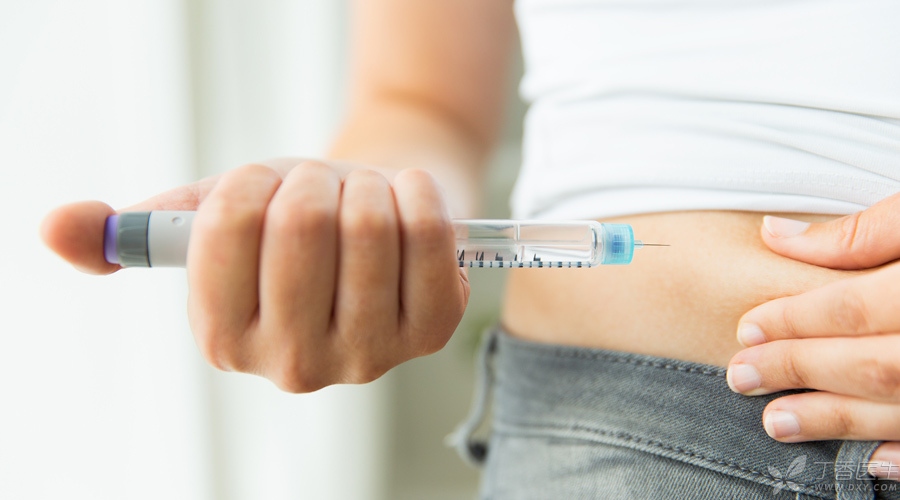
When insulin is mentioned, the first reaction of most diabetics may be a sharp needle and the accompanying injection pain.
In fact, with the exception of a very small number of patients who may feel pain due to abnormal sensitivity, or due to improper operation, needle touching nerve endings and other rare circumstances, most insulin injections are not as painful as everyone imagined.
Mastering the correct insulin injection method is helpful to reduce the pain of skin and flesh during insulin injection.
Today, Dr. Clove will teach you some tips to relieve the pain of insulin injection.
Relax! Relax!
Some diabetic patients are nervous and tense before injection. Under such circumstances, they will certainly feel pain.
Therefore, we need to relax psychologically and physically before injecting insulin.
1. Fully understand insulin and do a good job in psychological construction.
For some diabetic patients, insulin therapy is necessary:
- Patients with type 1 diabetes need insulin therapy for life from the onset of the disease. Patients with type 2 diabetes also need insulin therapy in some cases.
Everyone should know that receiving insulin therapy does not mean serious illness.
Under the guidance of doctors, insulin therapy can not only better control blood sugar and reduce side effects on liver and kidney functions, but also improve the quality of life and prolong life.
Step 2 Relax your muscles, too
After receiving insulin psychologically, let the body relax, don’t tighten the muscles at the injection site, relaxing the muscles helps reduce pain.
You know, compared with blood drawing, infusion and spanking, the pain of insulin injection is dwarfed.
Prepare before injection
Step 1 Put insulin at room temperature
For unopened insulin, it needs to be refrigerated at 2 ~ 8 ℃. If the unopened insulin is just taken out from the refrigerator compartment, it may be injected immediately after opening, which may cause pain due to cold stimulation. Therefore, it is necessary to put the insulin indoors [return to temperature] for a few minutes, and then inject after the insulin returns to room temperature.
For insulin that has been opened, it should be stored at room temperature (below 25 ℃). Attention should be paid to avoiding light and heat, and it is not necessary to put it in the refrigerator.
Step 2 Choose the right needle
It is very important to choose a needle with the right length. Needles with smaller diameter and shorter length will not hurt so much when injected.
The choice of needle is related to the thickness of subcutaneous fat and the injection site of the individual. Everyone needs to choose the needle suitable for themselves under the advice of the doctor.
Step 3 Use a new needle for each injection
If the needle is used repeatedly, the lubricating layer on the surface of the needle will fall off, the needle tip will be passivated and even burrs and barbs will appear, thus increasing the injection pain.
Therefore, don’t feel distressed about the needle money. Disposable use of the needle can greatly relieve the pain.
4. Dry the alcohol and inject it again.
If you use alcohol to disinfect your skin, remember to wait until the alcohol dries out before injecting.
Because if the alcohol is injected before it is dry, the alcohol will be brought under the skin from the eye of the needle, causing pain.
5. Don’t pinch the skin too hard.
When using a longer needle or where the fat layer is thinner, such as the upper arm, the skin needs to be pinched during injection.
During the injection, gently pinch the skin about 3cm wide at the injection site with one hand, and do not pinch the skin until it turns white too hard to avoid causing pain.

Choose the right injection site
STEP 1 Avoid root injection of hairs
There are often rich nerve endings near the root of fine hair. Injection in these parts will increase the sensitivity of the body to pain. Attention should be paid to avoid injection.
Step 2 Don’t inject at the same point
Common injection sites of insulin include abdomen, buttocks and thighs. If injected at the same point, it may cause fat hyperplasia, affect insulin absorption and cause pain.
Therefore, attention should be paid to rotation during injection. Three points should be paid to rotation:
- At the same time every day, inject the same part, for example, always choose to inject in the abdomen every morning, and do not change to other parts at will; At different times every day, inject different parts, for example, breakfast is injected in the abdomen, and other parts such as the lateral thigh or buttocks can be selected at night. Left and right rotation, for example, thigh injection can hit the left in one week and the right in one week, and other parts also need regular rotation.
Once pain, depression and induration are found at the injection site, the injection at this site should be stopped immediately until the symptoms disappear.
Attention should be paid to keeping a distance of 3 ~ 4cm from the last injection site for each injection to avoid skin infection and subcutaneous induration, and to avoid reusing the same injection site within one month.
Mastering the correct injection method
The secret of injection is: fast forward, fast out and slow push.
When entering and exiting the needle, try to be as fast as possible. When the skin does not feel pain, the needle has left quickly.
When taking medicine, it is just the opposite. Try to be slow and let the liquid medicine slowly enter the body.
Moreover, it is necessary to keep the route of entering and exiting the needle in a straight line as far as possible, and the needle will exit from whichever direction it enters.
Selection of Insulin Needle-free Syringe
At present, there are needle-free syringes. Compared with ordinary syringes with needles, needle-free syringes have good injection effect and no injection pain.
However, the price of needle-free syringes is relatively high, the process of disassembly, washing and installation is relatively complicated, and emaciated patients are likely to cause skin bruises.
If necessary, patients can choose to use it under the guidance of specialists.
Ask your family for help
If we really see the needle and our head feels dizzy, our hands tremble, we cannot overcome our fear, or we are not convenient for injection due to poor eyesight and other reasons, we can also ask our family to help us with insulin injection.
Sometimes, insulin pain is a psychological effect, but it is [I feel I will hurt].
In fact, as long as the above contents are compared and the correct injection method is mastered, the pain in insulin injection can be avoided.
